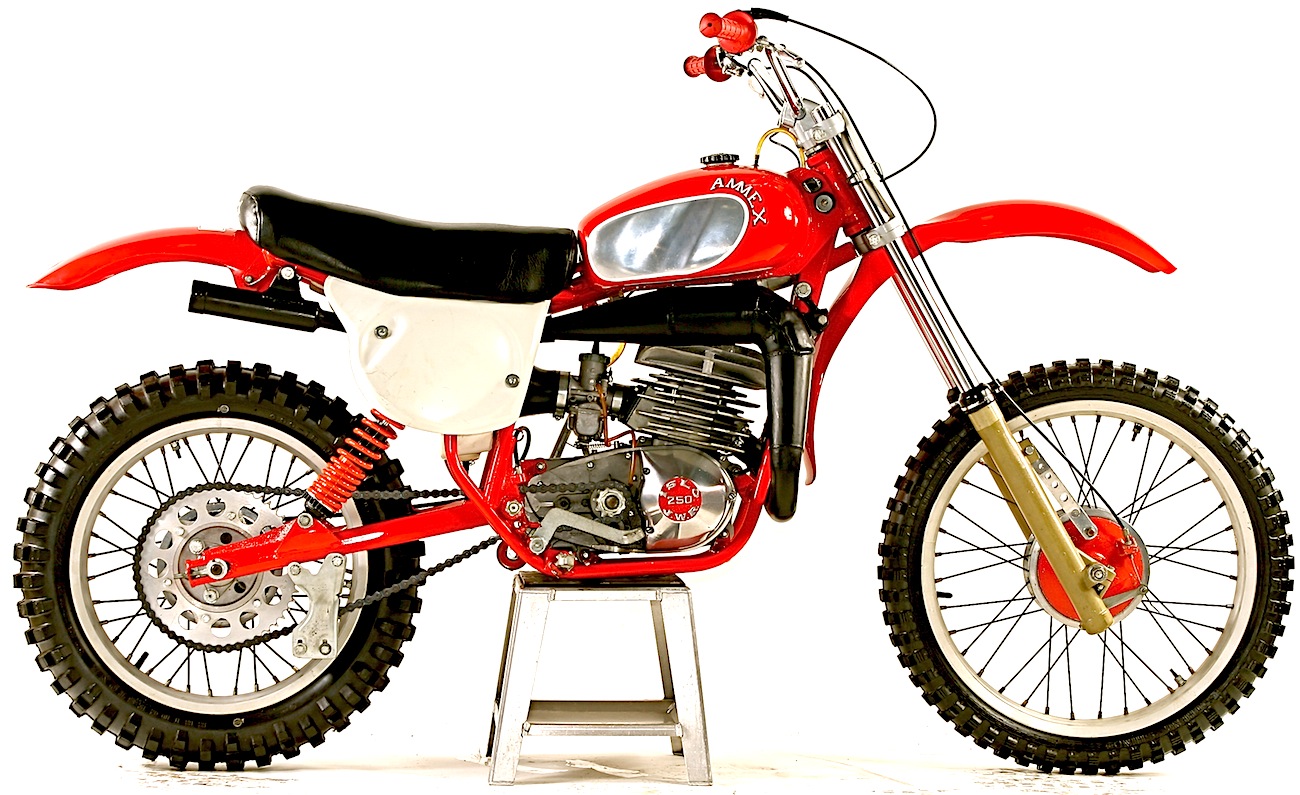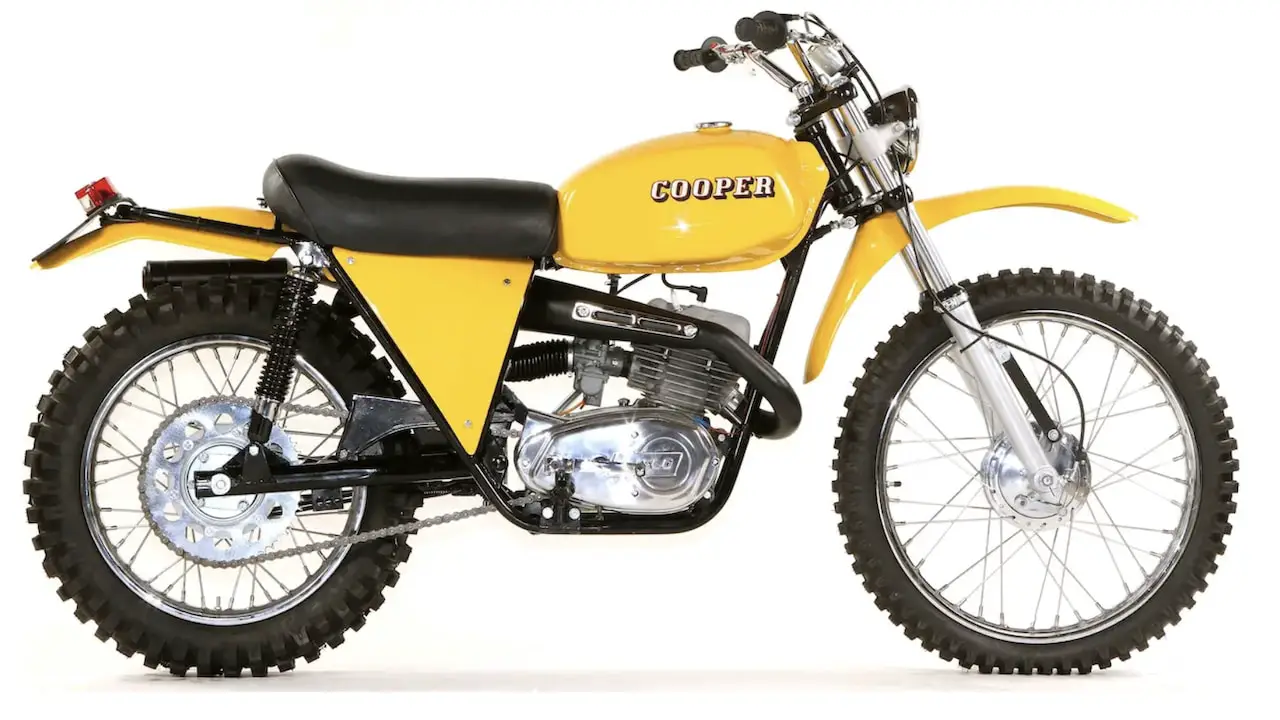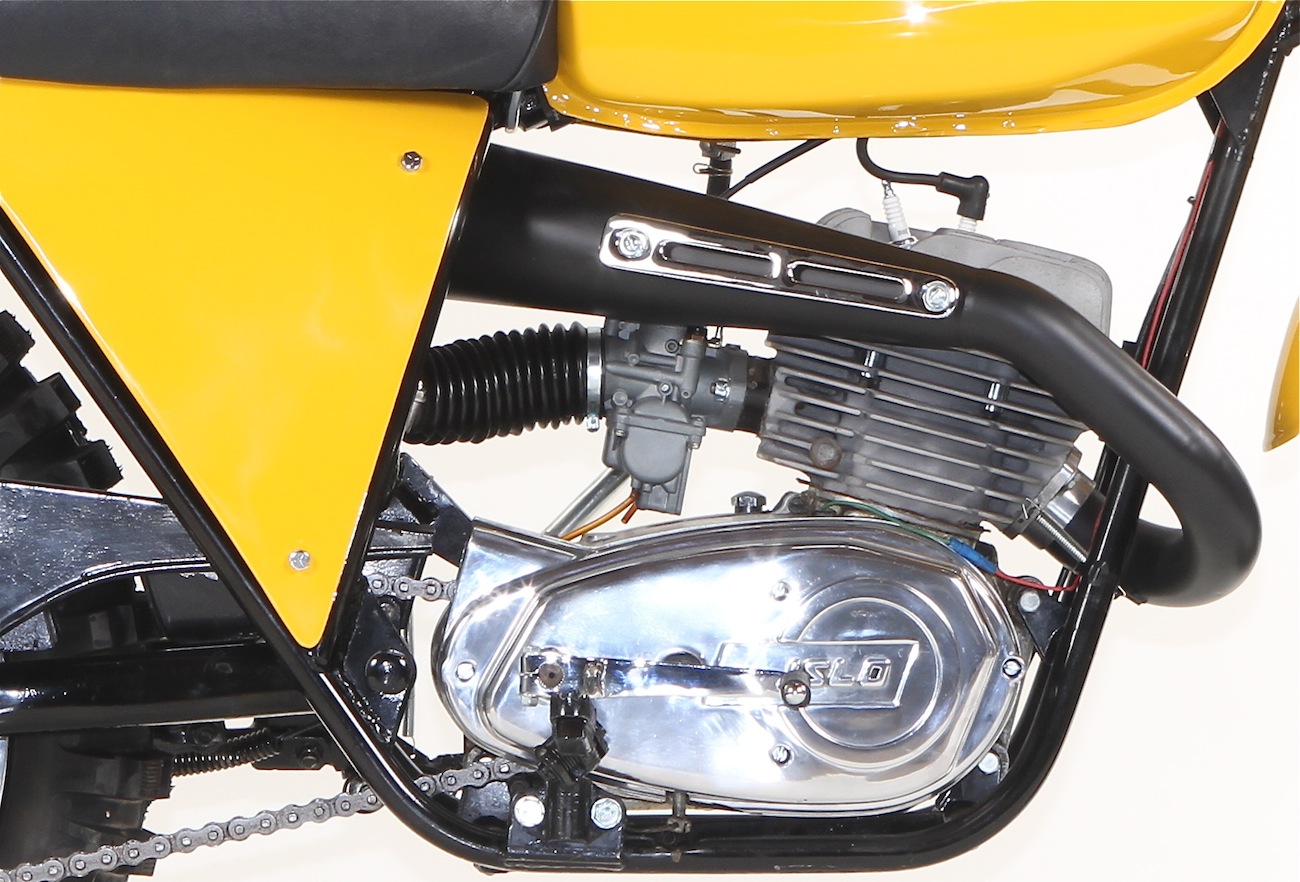CLASSIC MOTOCROSS IRON: 1973 COOPER 250 ENDURO
Cooper Motorcycles was the brainchild of Frank Cooper, owner of Apache Limited, the U.S. Maico distributor in Burbank, California. Cooper saw a gap in the marketplace between the inexpensive Japanese dirt bikes and the expensive and often quirky European brands. He approached Moto Islo, a high-volume Mexican commuter bike manufacturer, to build a dirt bike that would fill this gap. Moto Islo is named for the initials of its creator, Isidro Lopez. Frank hoped the Mexican-built Cooper would handle like a Maico, run like a Yamaha and cost less than the Japanese entries.
The Cooper 250 Enduro first appeared at the 1972 Long Beach Motorcycle Show. Beneath its distinctive yellow fiberglass side panels, fenders and fuel tank sat a Maico-inspired chromoly frame with a two-stroke engine that resembled a Yamaha clone. In fact, the Cooper borrowed its plate-style shift system from Maico, the dual-use kickstarter/shift shaft from CZ, and a Yamaha YZ250 top-end could be slipped right onto the Cooper cases. The front forks were Mexican-manufactured Betors, and the shocks were by Boge. The dry weight was 227 pounds with a full 28 horsepower on tap. The suggested retail price for a Cooper 250 Enduro model was $825. Unfortunately, reliability would become a problem. The initial production run of Coopers had suspect steel rims, fragile fiberglass fenders and weak transmissions. Frank Cooper fixed the rims and the gear ratios but couldn’t fix the machine’s reputation for poor metallurgy.
Suggested retail for the enduro model was $825, and the MX model was $840. Coopers have never achieved “collector” status, nor become desirable AHRMA race bikes, so the value of this Early Years of Motocross Museum example is around $4000, less than the cost of its restoration. There were enduro and motocross versions made during the two-year life of Cooper Motorcycles. The cool, and hard-to-find, components are the fiberglass tank and side panels. Don’t worry about the front and rear fiberglass fenders, as they are the same as early 1970s Maico fenders and easily sourced. Also, look for the Betor replica forks, Boge shocks and the “thru-the-frame” exhaust with a J&R-type silencer.
Frank Cooper’s brainchild was well received, but reliability was a problem. The initial production run of the Coopers had suspect steel rims, fragile fiberglass fenders and a “close-ratio” transmission that yielded a top speed of just over 50 mph. Frank Cooper fixed the rims and the gear ratios, but not the machine’s bad reputation. By 1975, Cooper Motorcycles was going out of business, and the Jones family bought the Mexican-based enduro bike as a prototype for the first Jones-Islo motocross bike (the name would later be changed to Ammex, which stood for American-Mexican).
WHAT IT BECAME IN ITS SECOND LIFE
 This is the Jones family version, originally called Jones-Islo, but changed to Ammex after the phonetics proved embarrassing. For more info on the Ammex click here.
This is the Jones family version, originally called Jones-Islo, but changed to Ammex after the phonetics proved embarrassing. For more info on the Ammex click here.
In the end, the famous Jones family (Don, Dewayne and Gary) bought the brand and renamed it “Ammex” with the intent of having four-time 250 Champion Gary Jones race it to sales success (with Eddie Lawson racing one in dirt track). Don Jones hoped to fix the Cooper’s flaws and have an improved motocross version raced by his sons. The Ammex suffered a litany of reliability issues with the Mexican machine, but they worked tirlessly to solve the problems as they came up, but the one thing they couldn’t fix was the devaluation of the Mexican peso, which wiped out their money and ended the Cooper/Ammex story.
 Gary Jones on the Ammex 250 at the 1976 San Diego Supercross.
Gary Jones on the Ammex 250 at the 1976 San Diego Supercross.
The Ammex was a vastly superior machine to the Cooper, but was doomed when the Mexican peso was devalued in 1976. With 65% of the Ammex required to be of Mexican content, the massive dive in the value of the peso wiped out the Jones’ investment. Moto Islo vanished from the Mexican motorcycle market and, after a brief stint as a Honda subsidiary, went on to produce washing machines. Isidro Lopez died on July 5, 2008.
For more info go to the Early Years of Motocross Museum site at www.earlyyearsofmx.com








Comments are closed.